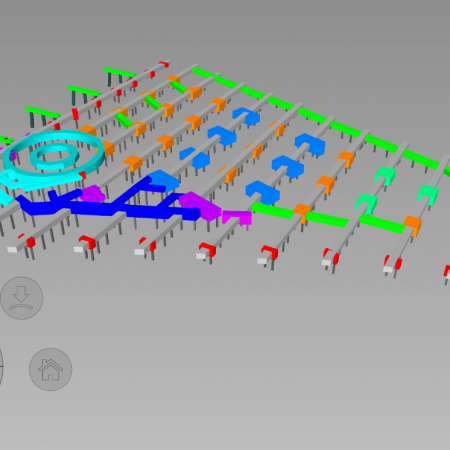Why BIM is Good for Customers as well as Contractors
As the use of BIM tools and methods has matured it has become clear that as well as helping contractors, suppliers and consultants to collaborate, there are also significant benefits for customers. Here are some of the main advantages.
Better Planning
BIM puts much more detail into the planning process. Instead of waiting for surveys before designing solutions we can now use asset information from a repository (see below) as well as using laser scan data recorded from trains or helicopters to build ‘point clouds.’ These provide an image of the asset accurate to 25mm (and often much finer) for options reporting. Key measurements such as parapet heights, bridge widths and distances from conductor rails can be taken without needing to visit the site.
Practical issues such as plant access and movements can also be assessed using the model, helping to avoid many of the unforeseen on-site issues that can cause delays and overruns.
Greater Safety
Fewer trackside visits inevitably means significantly less safety risk. Any visits that are needed can be shorter and highly focused, reducing the need for closures.
Retained Knowledge
Too often in the past, a great deal of knowledge about an asset has been accumulated during a project only to be dissipated at the end. Or where it is retained it is in documents and 2D plans in a variety of formats that are difficult to organise and access.
During the project to rebuild the transport interchange at The Hard in Portsmouth, all partners collaborated using the BIM Field360 Common Data Environment. Repairs to 150 defects to the under-deck structure were logged electronically to support real time decision making and tracking. The 3D model handed over to the customer makes over 2000 pages of detailed data about the asset condition and history easily available.
Detailed 3D models provide a much more accurate and usable representation of assets and works than could be achieved with 2D drawings. This allows planning of future work to proceed with far greater confidence.
Faster Decision Making
Providing an intelligent BIM allows information to be pinned to each element in the model. Condition reports, photos, drawings, and QA checklists can be shared without any ambiguity. Project and site teams, designers and consultants don’t have to be in the same physical location to collaborate and make decisions.
Transparency
BIM tools provide the greatest possible clarity over the work completed and can also be used to automatically report daily activities and hours. Tracking project progress and budgets can be done with far greater precision and there is less need to ‘progress chase.’
Because all data is linked back to the 3D model this can become a visual ‘dashboard’ to show project progress at a glance with, for example, colour coded elements illustrating whether work is planned, in progress or complete.
Beyond the details the business benefits are significant. Closures can be shorter and more focused. They can also achieve more by having a clear risk-prioritised list of tasks. This all adds up to better use of resources and less disruption for asset users.
As the tools evolve and the repository of asset information expands, these benefits can only get greater.
For more information on the use of BIM, click here.

